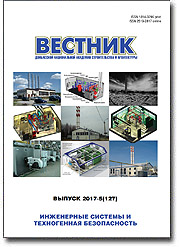Prospects for the use of Electrification of Dust to Increase the Efficiency of the Cyclones
Abstract: In the article the question of electrification of construction dust, which is in a sufficiently strong vortex flow has been considered. Considering such phenomena as tornadoes, storm clouds, we come to the conclusion that a tornado occurs the strongest electrification of dust, which is accompanied by a powerful lightning discharge, especially at the base of the trunk of the tornado, where there is a large number of electrified dust. When passing the trunk of the tornado, light bulb filament can light up that supports the theory of the presence of strong electromagnetic processes in the vortex flow of electrified dust. It is established that the electric potential of construction dust in the cyclone can reach units and even tens of kV. Thus, the energy expended on the creation of the cyclone is an intense vortex flow, is not fully used (only used the centrifugal force created by the vortex flow). A concomitant phenomenon of electrification construction dust, is unused. It is concluded that the use of this phenomenon, can greatly increase the energy efficiency of a cyclone cleaning.
Keywords: cyclone, tornadoes, static electricity, electromagnetic field.
Pages: 11-17.
For citation:
For citation: Orlov, S. M.; Romanenko, B. R.; Orlova, A. Ya. Prospects for the use of Electrification of Dust to Increase the Efficiency of the Cyclones. – Text : electronic. – In: <em>Proceeding of the Donbas National Academy of Civil Engineering and Architecture</em>. – 2017. – Issue 2017-5(127) Engineering systems and technogenic safety. – Р. 11-17. – URL: https://donnasa.ru/publish_house/journals/vestnik/2017/2017-5(127)/st_02_orlov_romanenko_orlova.pdf (date of access: 04.04.2025). – ISSN 2519-2817.

Issue 2017-5 (127)
Journal: Proceeding of the Donbas National Academy of Civil Engineering and Architecture
Publish house: Donbas National Academy of Civil Engineering and Architecture
Journal: Proceeding of the Donbas National Academy of Civil Engineering and Architecture
Publish house: Donbas National Academy of Civil Engineering and Architecture
